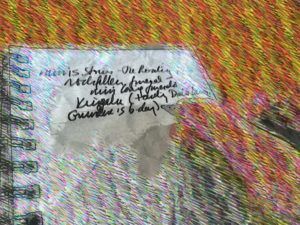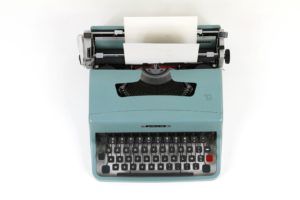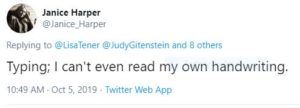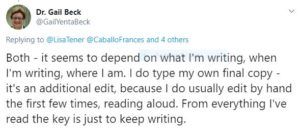 Have you discovered or rediscovered the power of writing longhand? Moving your hand across the paper as the words pour onto the page, coming out faster than you can legibly write?
Have you discovered or rediscovered the power of writing longhand? Moving your hand across the paper as the words pour onto the page, coming out faster than you can legibly write?
I almost always write longhand when I work on my book. I even edit that way, on paper.
However, when it comes to blog posts, I often type at the computer. Unless of course inspiration hits me while I’m outdoors or waiting for someone or somewhere not at my computer. In that case, I write by hand.
I believe my best writing often comes from writing longhand. And I love to write longhand in the mornings when I first get up.
I was curious about what some of my clients and colleagues do when it comes to their writing. Here’s what I heard back.
The Science of Longhand Writing
You may have heard the explanation that our brains engage in rewarding and creative connections when we write in this fashion, left and right brain interacting in a way that’s different from typing on a computer.

An informal survey of writer friends, colleagues and clients indicates close to a third write longhand first, type later, though many employ a combination of writing longhand first draft and typing after that. My colleague, Stuart Horwitz even uses an old fashioned typewriter for draft #2!

The Perils of Writing Longhand
 And yet, you may have encountered the perils of writing longhand, as I have.
And yet, you may have encountered the perils of writing longhand, as I have.
Writing longhand requires one more step to get your writing from the page to digital format, where it can be easily edited, shared as a blog post or added to a book. In the past, I often missed this step and the majority of my efforts remain in journals and yellow legal pads, stuffed in woven rectangular baskets from TJ Maxx and Home Goods. Unfinished books and other projects that overwhelm me rather than inspire. They may never see the light of day.
So, how did I manage to get my manuscript off to a developmental editor in digital form, after writing everything longhand first?
The Solution

Planning.
I know. I’m not a planner, either.

And yet, the process couldn’t be simpler.
- Write in the morning.
- Follow writing with typing.
- If you absolutely don’t have time to type right away, schedule it into your calendar with an alarm/notification.
- Follow through when your alarm goes off. Keep that time sacred.
The Hitch
I’ve been avoiding screens to some extent, due to a temporary issue with my eyes, but I didn’t let that deter me. I hired my friend and neighbor Paula to type for me as I read to her from my hand written notes. If the handwriting is particularly legible, I give her the notes and answer questions about handwriting later.
The Payoff
It’s worked, judging by the 44,401 words I sent off to my editor friend last week.
And after typing this post, I’m typing up the new chapter I wrote this morning.
It’s not a foolproof plan. Being a fool, I’ve written a few chapters I tucked away in a file, but I plan to type those in this weekend as well. I know too well the fate of pages filed away—first a file, then a basket, then a dark closet and eventually it makes its way to the basement. Something for my kids to discover when I’m gone—and either feel guilty throwing it out, or burdened by where to store them for their kids to find!
Nope. This one’s not going in the basket! And I can’t wait to share it with you when its ready.
No Regrets

Do I regret not typing up my earlier notes for the dozens of other books I started?
No.
Well, sure, partly.
But I also know that this book is better than any of them. They all served as practice for my best work yet. And one or two of them may yet see the light of day, if Paula has the time for typing! I know they’ll be the better for writing this book first, and I’ll return to them with the wisdom and voice of this book to guide and strengthen them.
How About You?
What’s your process? What method of writing works best for you and why? What tips do you have for getting your longhand into the computer? How does the process inform the writing?



